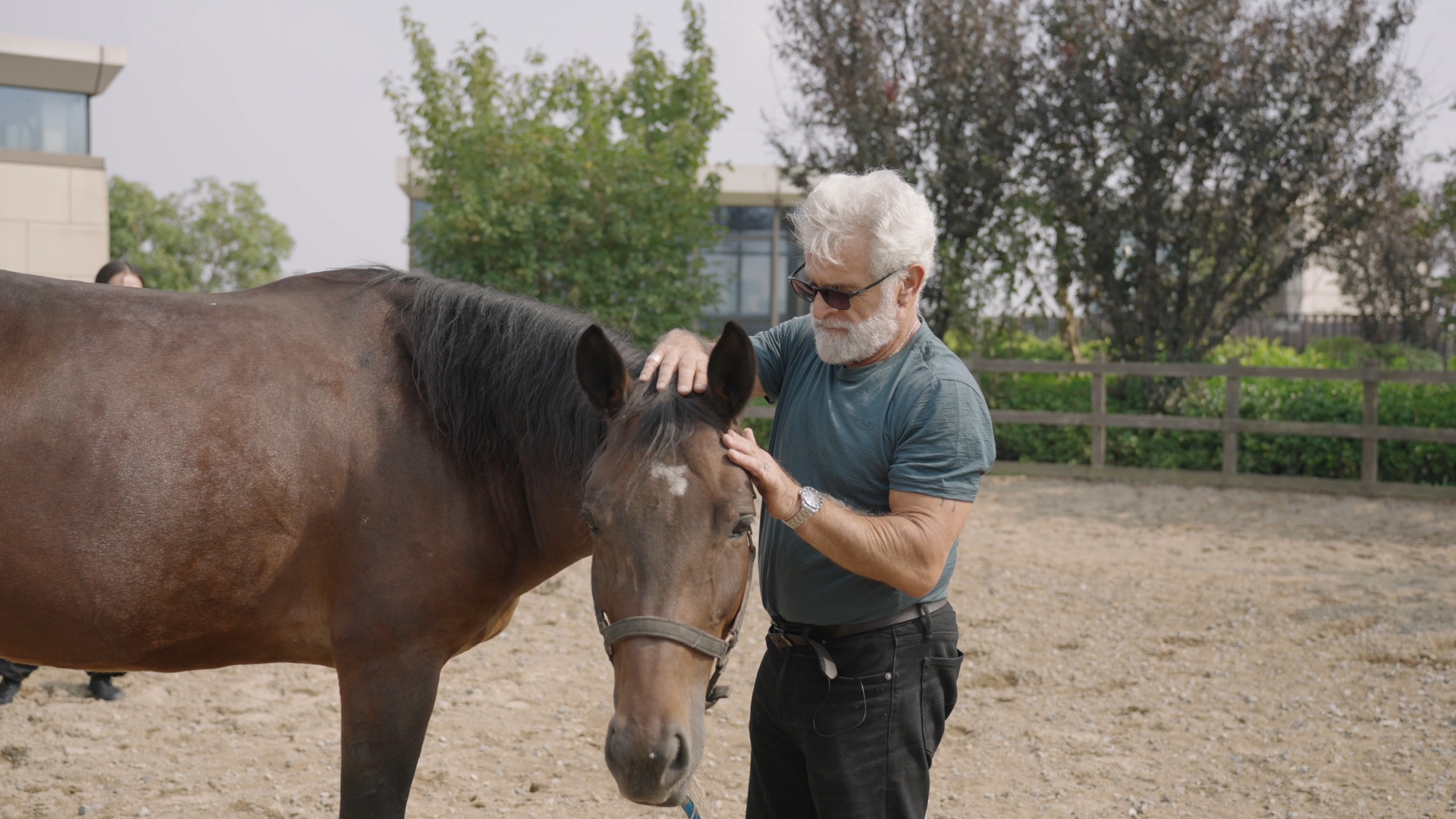
Combining Equine Massage and Cranial Sacral Therapy
The term equine massage encompasses a great deal of different concepts and disciplines. Equine massage therapy includes and is not limited to myofascial work, stretching, trigger point therapy, Rolfing structural integration techniques, effleurage, petrissage as well as techniques from neuromuscular therapy. Why would we introduce an energetic technique like cranial sacral therapy into a series on the more direct pressure techniques of equine massage?
Cranial sacral therapy has been practiced since around 1901. It began with Dr. William Garner Sutherland and supported by his teacher Dr. Andrew Stills. Some people trace it all the way back to the Egyptian and Persian mystery schools! It's a very light therapy that focuses mainly on the fluids, bones and their connections. The touch is as light as the weight of a scarf or hands floating on corks sitting on water. This light touch allows the practitioner to be able to feel the very subtle motions and energetic flows that are happening within the body that they are palpating. You can read more about cranial sacral therapy here.

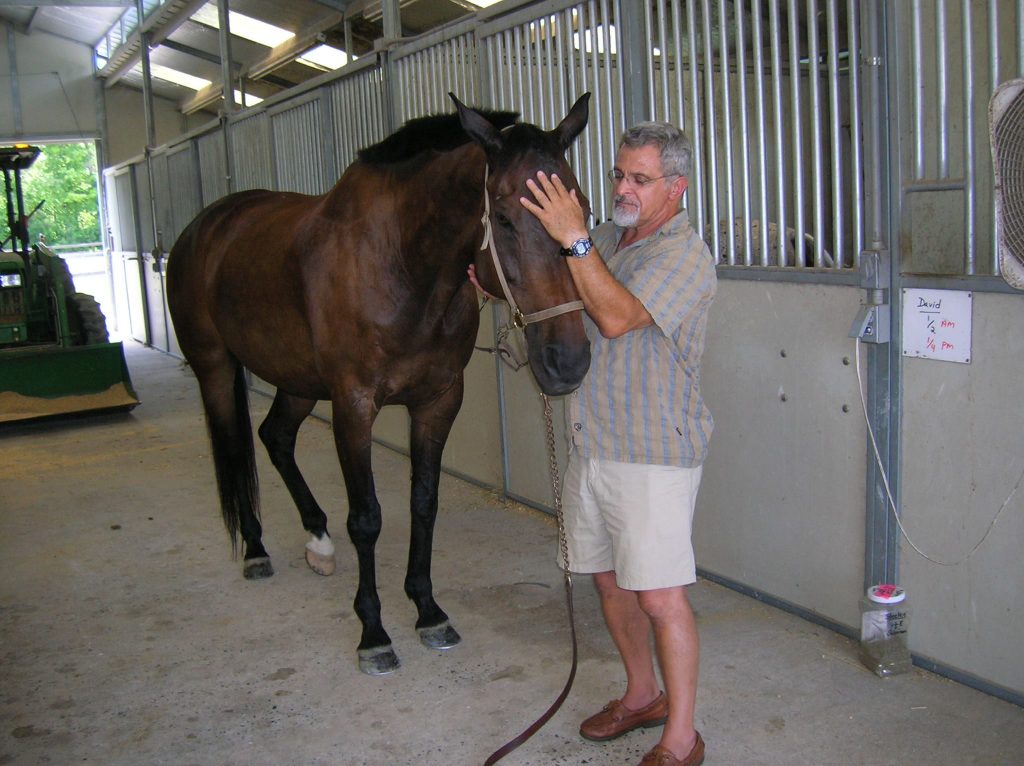
Take a look at these two pictures of me doing cranial work on these horses. Notice how relaxed they are. Anyone who has received cranial sacral therapy knows how deeply it impacts their nervous system, bringing a profoundly deep relaxation response. Cranial sacral therapy has an extremely powerful impact on the central nervous system. Our horse friends are in great need of this type of relaxing and restorative work considering how we are treating them. The environment that we create for them is contradictory to their genetic inheritance. I managed a 50-horse barn on the eastern slope of Colorado, a 7 horse paint show barn near Aspen, Colorado, and was responsible for the care of 9 stalled Arabian stallions on a breeding farm in Virginia with close to 70 mares. I know what stalls do to them mentally and physically. Its not good folks! Anything we can do to relax them, brings profound and valuable performance changes.
Our video course combines all of the massage techniques with the addition of cranial sacral therapy. In cranial sacral therapy we hold/project a field which envelops our horses and creates a resonant field. It's a reflective art. The zebra can determine the lion’s attitude from quite a distance. Horses can feel the energy field that you're projecting, and this works both with the cranial and the myofascial approaches that we teach in our equine massage video course.
Benefits of Equine Cranial Sacral Therapy
Cranial sacral therapy is valuable for TMJ trauma, head and facial nerve issues, anything that might create trauma to the mouth or the skull of the equine. Any trauma or imbalances in the head and neck will translate throughout the entire body. If there's dysfunction in the head because of how they are handled or the hardware that’s being used in their mouth, there's generally always something that needs to be rebalanced because of the impact throughout the chains of fascia etc. And vice versa.
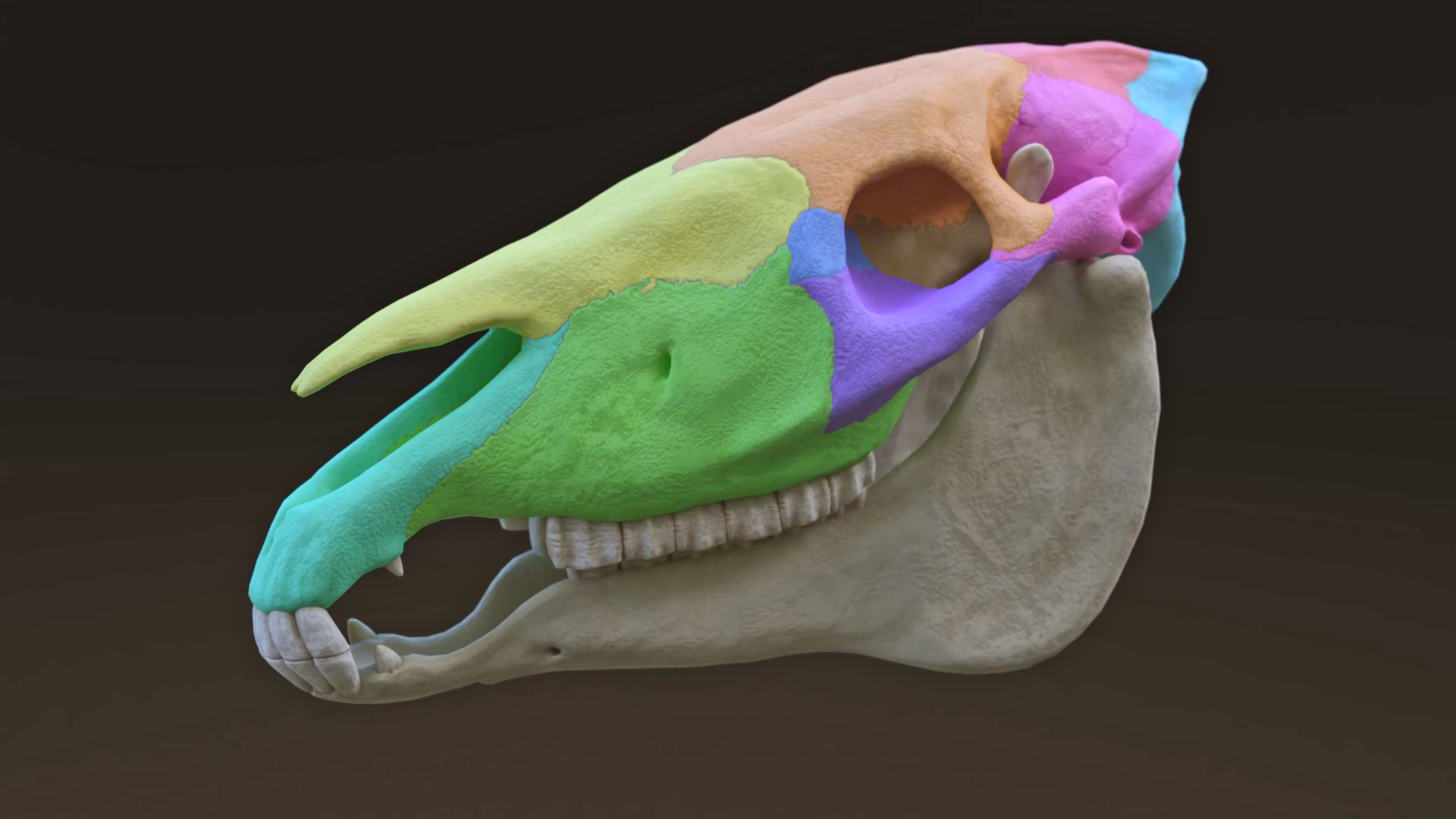
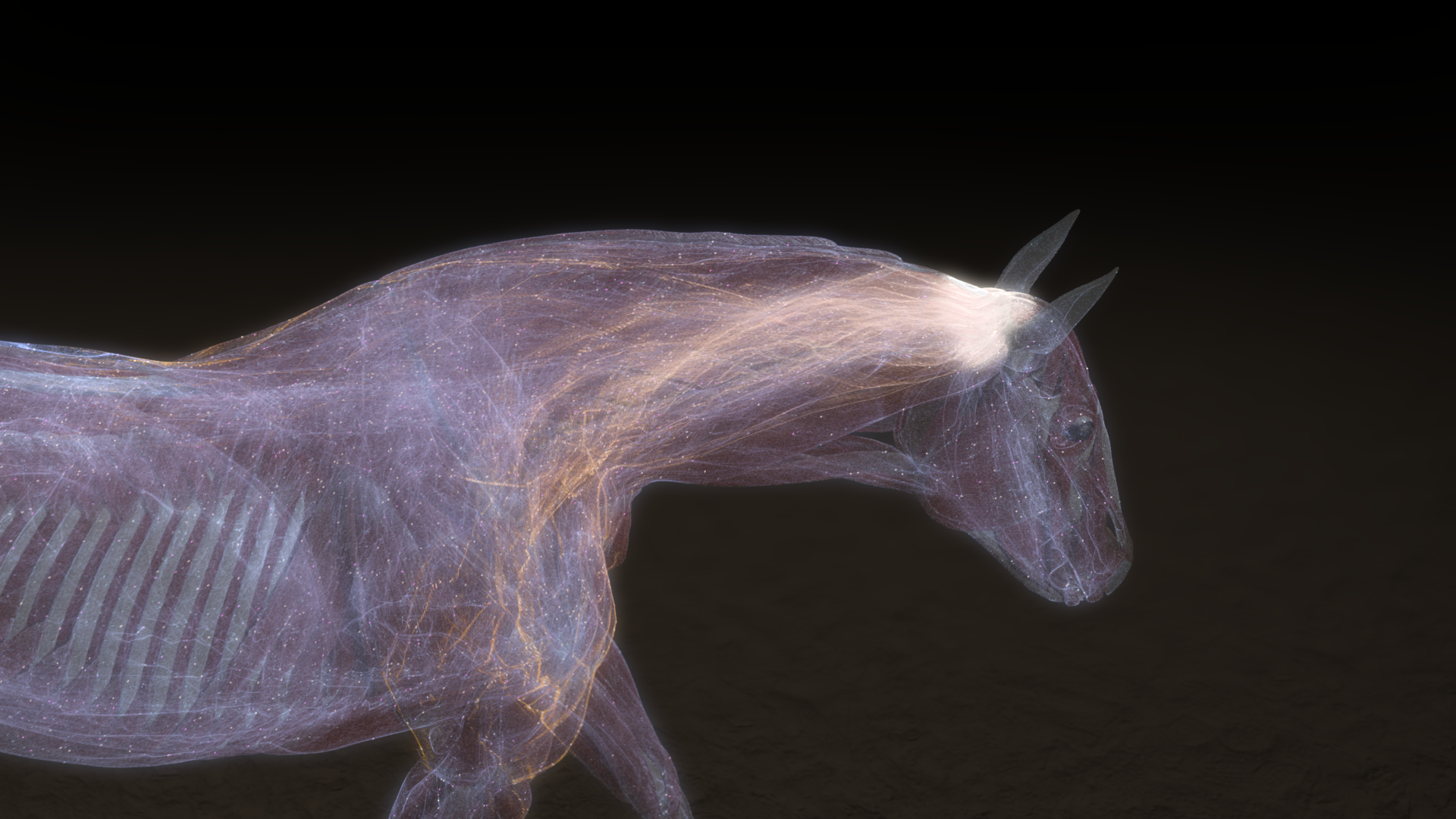
There are 26 bones in the head of a horse and if any of those bones are out of alignment, it can often translate to postural changes with the entire structure, creating misalignment and eventually dysfunction. Just imagine how your body feels if you have a stiff neck or an injury to a vertebra. Eventually, your lower body is impacted, and you don’t move well. It’s a negative serving loop. It's just one chain link in a chain of events that then creates an imbalance somewhere else in the body.
I've been practicing for 35 years and some horses and people need a gentle approach while others gain value from a more direct physical approach. I use both depending upon the horse. I worked with 5 Olympic three-day eventing horses, their rider, groom and manager that were going to compete in the 2012 eventing trials in London. Each one of the horses had a different personality and conformation and needed to be approached and handled in a different manner to be effective. They were all champion quality, but they all presented themselves with different issues and different temperaments that could change from session to session.
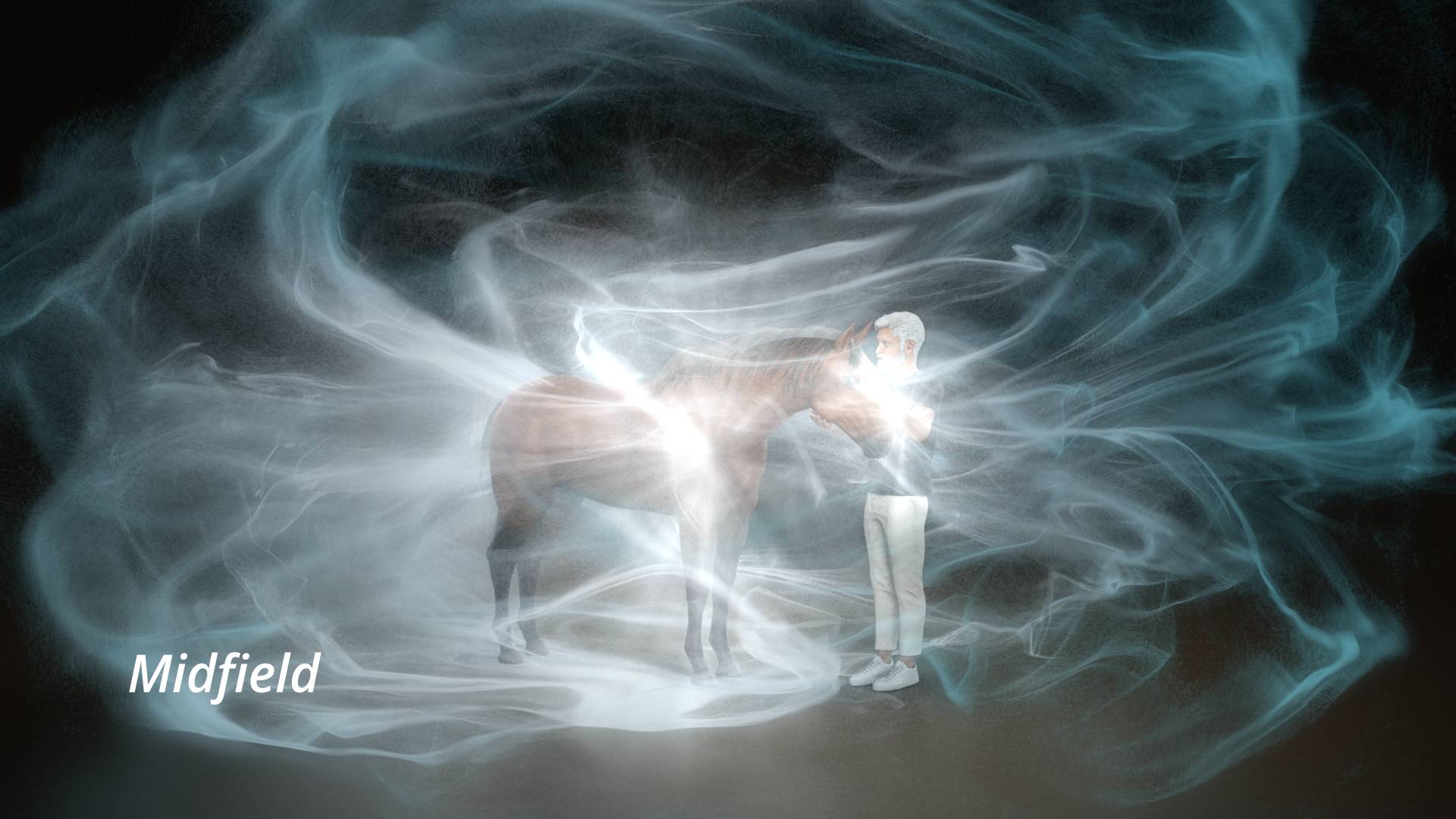
Cranial therapy is an amazing entry into the “system” of the equine patient. It's non-invasive, so once the horse gets used to your gentle touch and that you're not there to throw a saddle on them, put a bridal or a bit in their mouth, and ride them, but just there to lay hands on them and listen, their temperament begins to change, and they begin to relax and respond. The more you visit with them, the deeper the connection grows, and the more powerful healing ensues. It is a huge value to horses that are kept in stalls most of their lives, because often they are coping with mental and physical distress.
Once a horse accepts me in their space, if they need more muscular type work I can make that happen more easily and gently once I have establish a cranial type field. It has been an extra tool or two in my bag and it's proved to be valuable over the years. It’s an effective approach and both challenging and stimulating for me as a practitioner to play around with different tools and techniques to see which works the best for that particular subject once the level of trust has been established. The combination of the two approaches has a distinctly powerful effect on healing them and bringing them into balance.